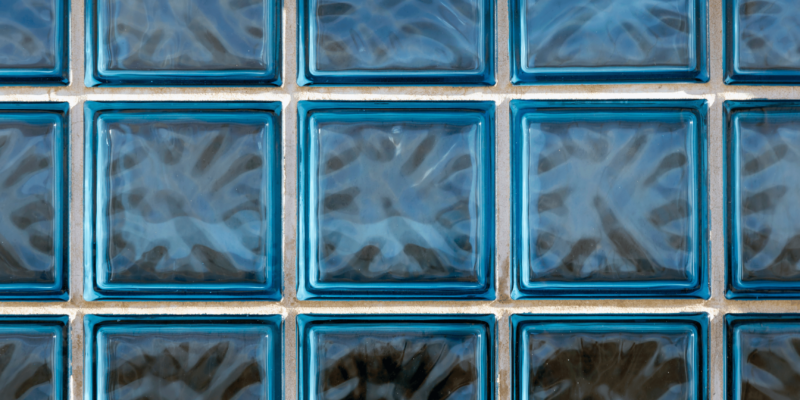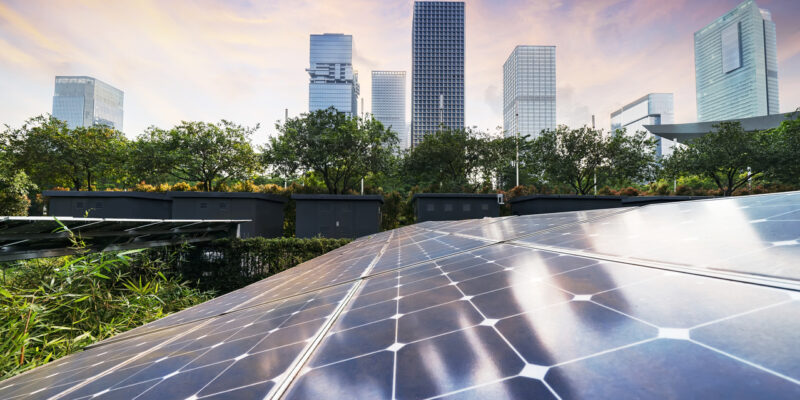There are lots of sayings about people in glass houses, and now, thanks to a new pilot project from MIT, those sayings may be coming true.
Researchers have recently created glass blocks from recycled bottles that are as strong as concrete. A testament to the potential of upcycling and a glimpse into the future of green construction, the blocks are just one of many potential new materials that could revolutionize the construction industry.
Here’s what you need to know about these glass blocks and other materials that are showcasing the ingenuity and creativity of material scientists without compromising function or aesthetics.
How Are These Glass Blocks Made?
The glass blocks developed by MIT are primarily crafted from recycled glass bottles. The process begins with collecting and sorting discarded glass, which is then cleaned to remove any impurities. Once the bottles are prepared, they are melted at high temperatures to create a molten glass material. This liquid is then molded into block shapes, cooled, and treated to ensure durability.
What sets these glass blocks apart is their potential to reduce waste significantly. By using recycled materials, MIT is cutting down on the energy-intensive process of producing new glass from raw materials like sand, soda ash, and limestone. Additionally, by diverting glass bottles from landfills, this process addresses one of the major challenges of waste management: dealing with non-biodegradable materials.
Uses of Recycled Glass Blocks in Construction
The versatility of these glass blocks opens up a range of possibilities in construction:
Architectural Design: With their translucent properties, these blocks can be used to create walls or partitions that allow natural light to pass through, reducing the need for artificial lighting while adding a sleek, modern aesthetic to buildings.
Thermal Insulation: Similar to double-pane windows, these blocks can provide excellent insulation, keeping buildings cooler in the summer and warmer in the winter, contributing to energy efficiency.
Structural Use: Glass blocks are surprisingly strong and can be used in load-bearing walls or facades. When combined with steel or other reinforcements, they can handle significant weight while providing a unique design element.
Noise Reduction: Glass blocks can also act as sound barriers, making them ideal for use in urban construction where noise pollution is a concern.
Similar Sustainable Materials Shaping the Construction Industry
MIT’s glass blocks are not the only innovative material changing how we approach sustainable construction. Several other materials are gaining attention for their eco-friendly properties and potential to revolutionize the industry.
Recycled Plastic Bricks: Similar to the concept of using glass bottles, companies are now creating bricks from recycled plastics. These bricks are lightweight, durable, and can be used for affordable housing in areas where conventional materials are scarce.
Hempcrete: Made from the inner fibers of the hemp plant, hempcrete is a bio-composite material that acts as both insulation and structure. It’s carbon-negative, meaning it absorbs more CO2 than it emits during production, making it an excellent alternative to traditional concrete.
Mycelium Bricks: We’ve talked about mushrooms in construction in previous posts, and scientists continue to study Mycelium, the root structure of fungi. It currently is being cultivated to create bricks that are lightweight, strong, and biodegradable. These bricks grow themselves with minimal energy input and are completely compostable after use.
Algae-Based Materials: Similar to fungi, algae is now being used to produce a variety of building materials, from bio-plastics to sustainable insulation. Algae-based systems can also be integrated into building facades to absorb CO2 from the air, providing a dual function of material and air purification.
The Future of Sustainable Building Materials
As the construction industry continues to evolve, materials like MIT’s glass blocks and other innovative options are at the forefront of driving positive environmental change. These developments showcase how recycling and upcycling can create high-quality, functional products that not only reduce waste and reduce costs, but also enhance the sustainability of our buildings.
The impact of these innovations will extend far beyond reducing landfill waste. By adopting materials like recycled glass blocks, we can create buildings that are energy-efficient, resilient, and aligned with the principles of the circular economy: a model where resources are reused and recycled, minimizing the need for new raw materials.
Sustainability in construction is no longer a trend; it’s a necessity.
The future of building lies in the creative use of materials that prioritize both the environment and the needs of modern construction, paving the way for a greener, more sustainable world. MIT’s glass blocks are a clear example of how innovative thinking can turn waste into opportunity, transforming the way we build and design for generations to come.


